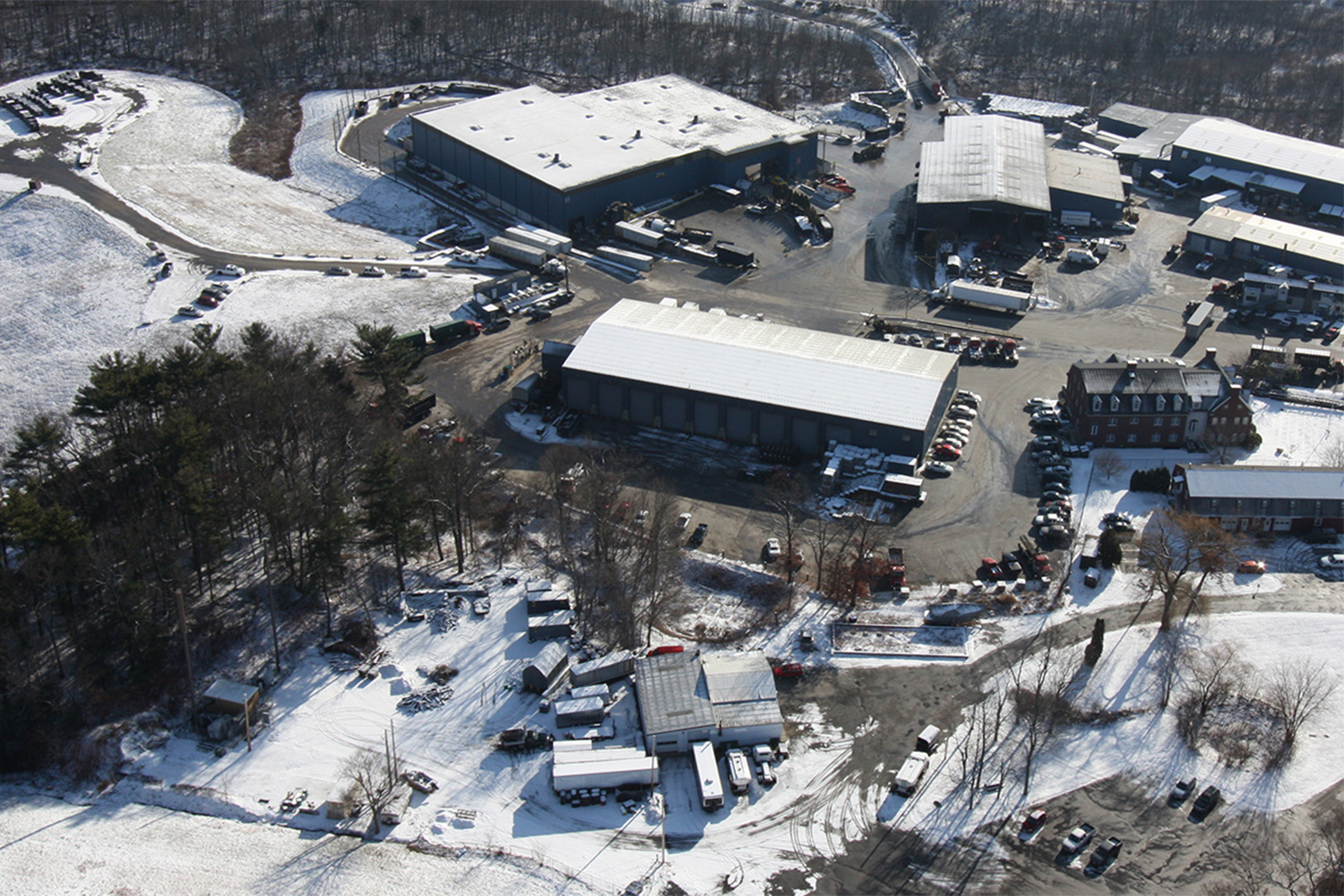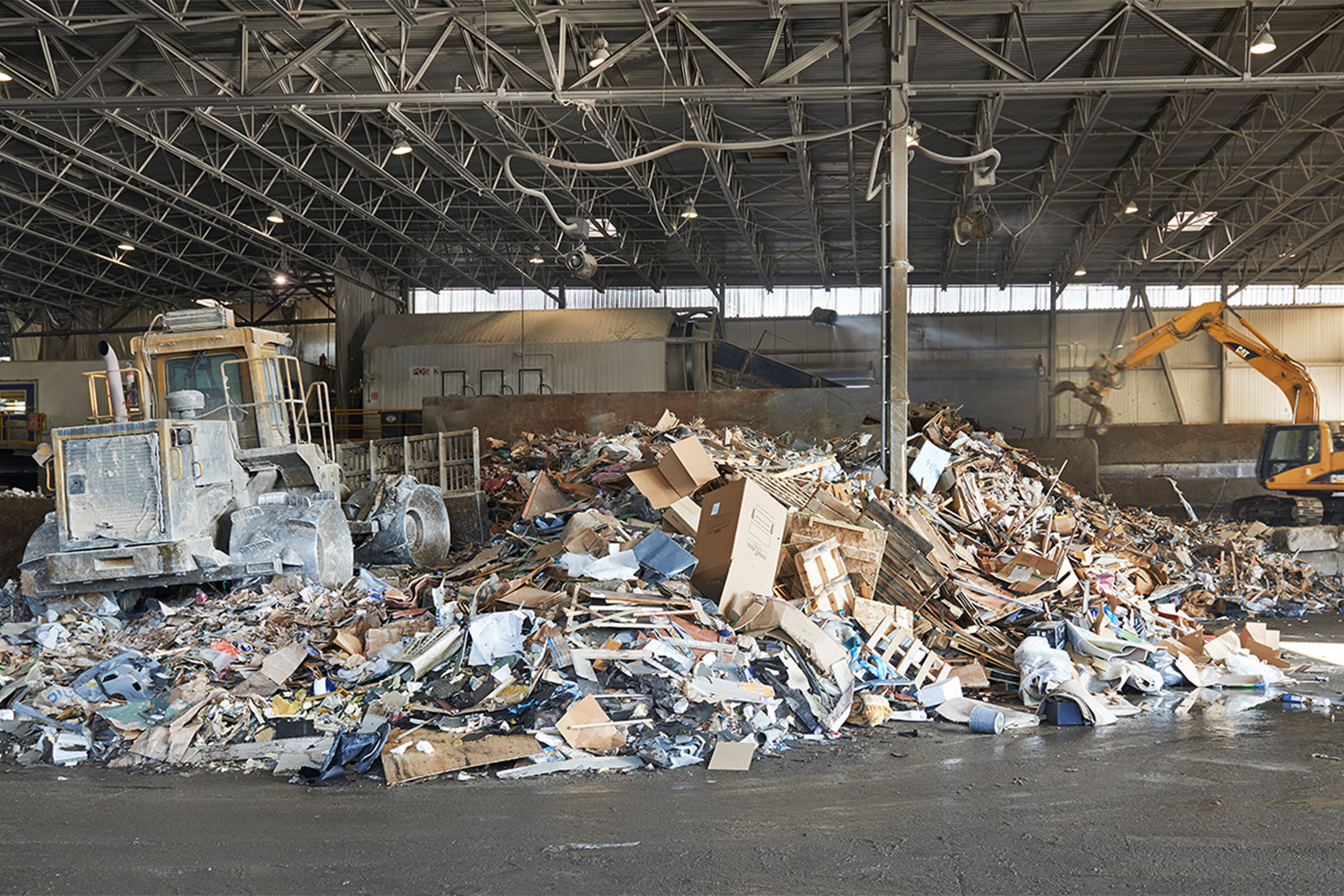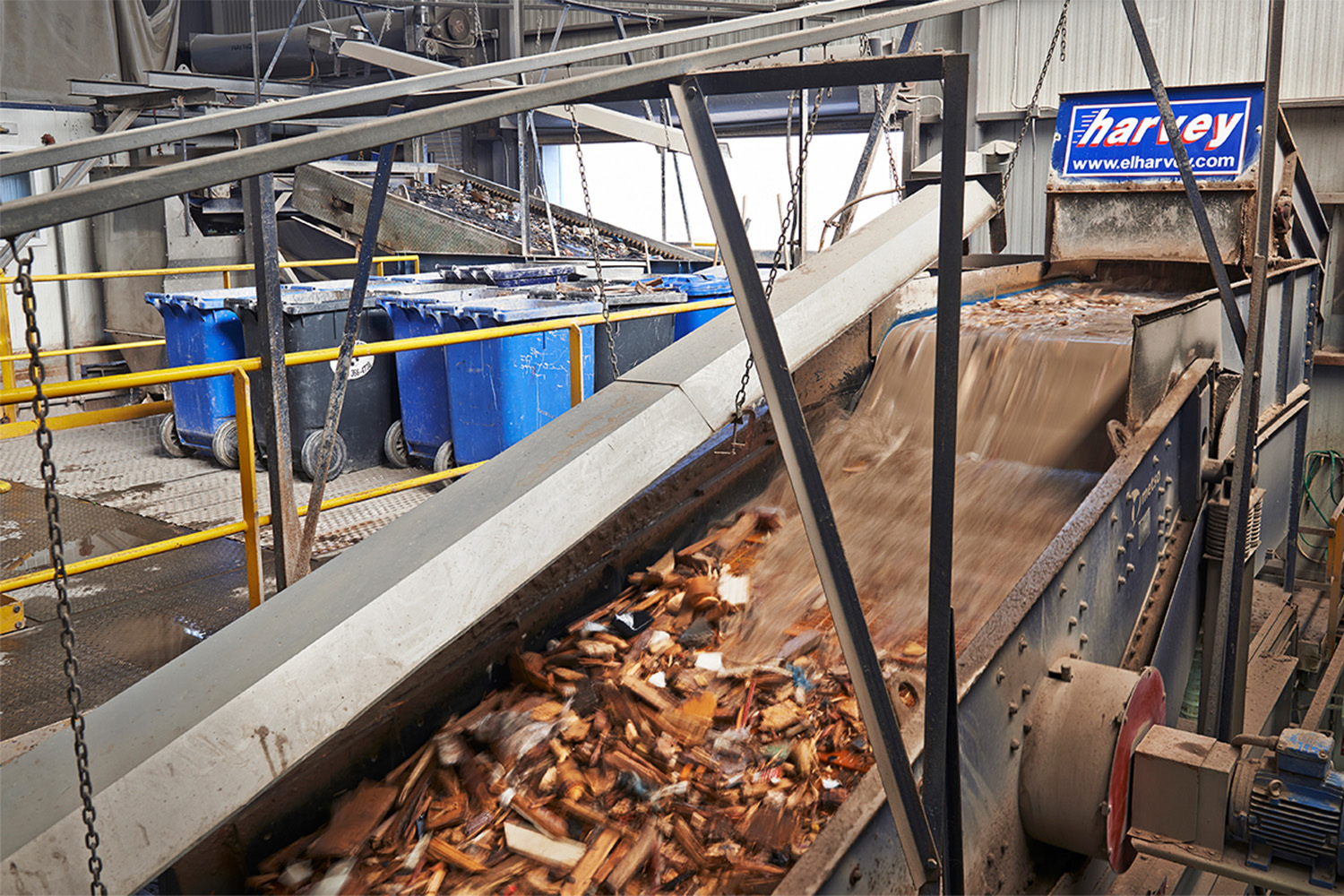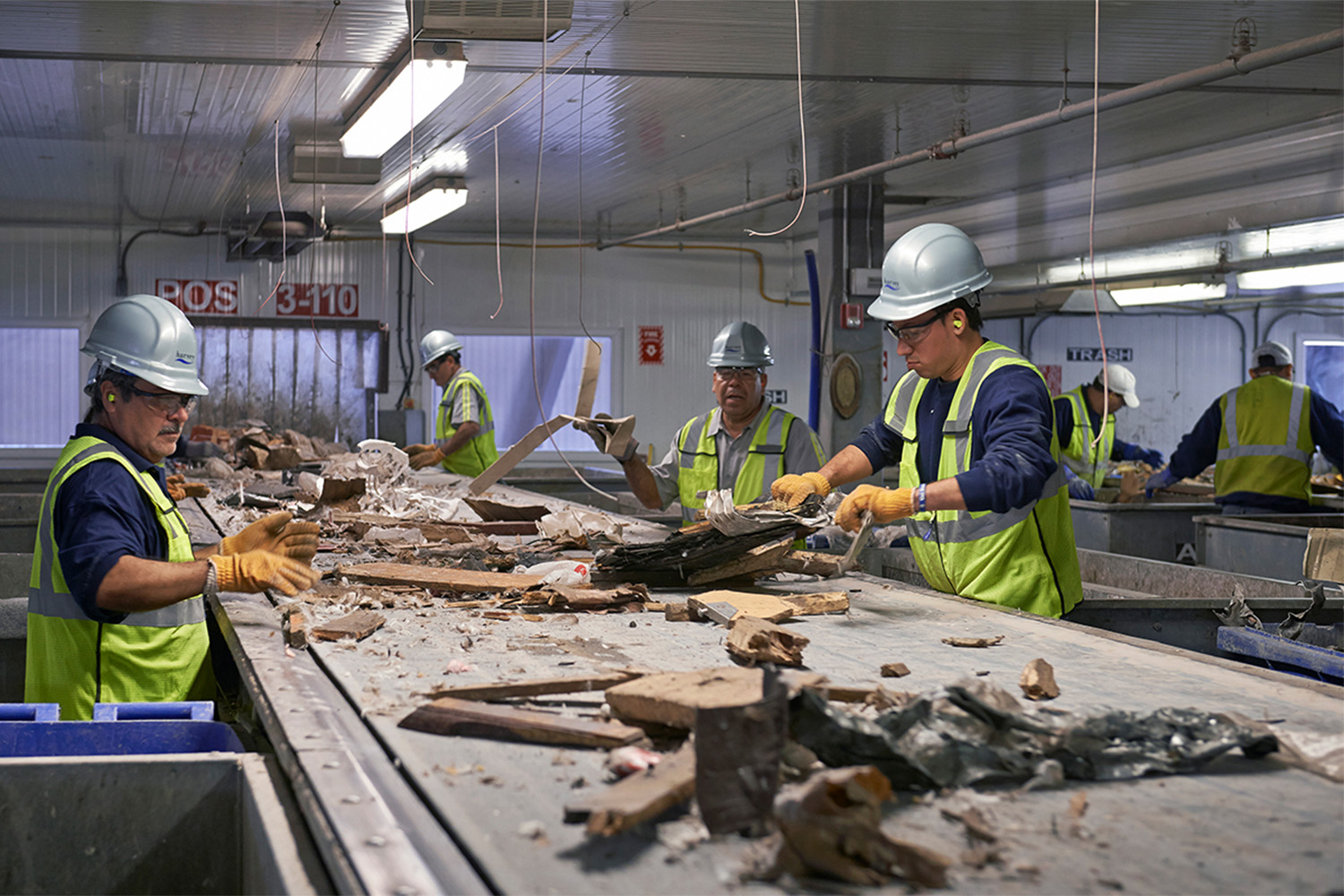The Life Re-Cycle of Construction Waste
Share
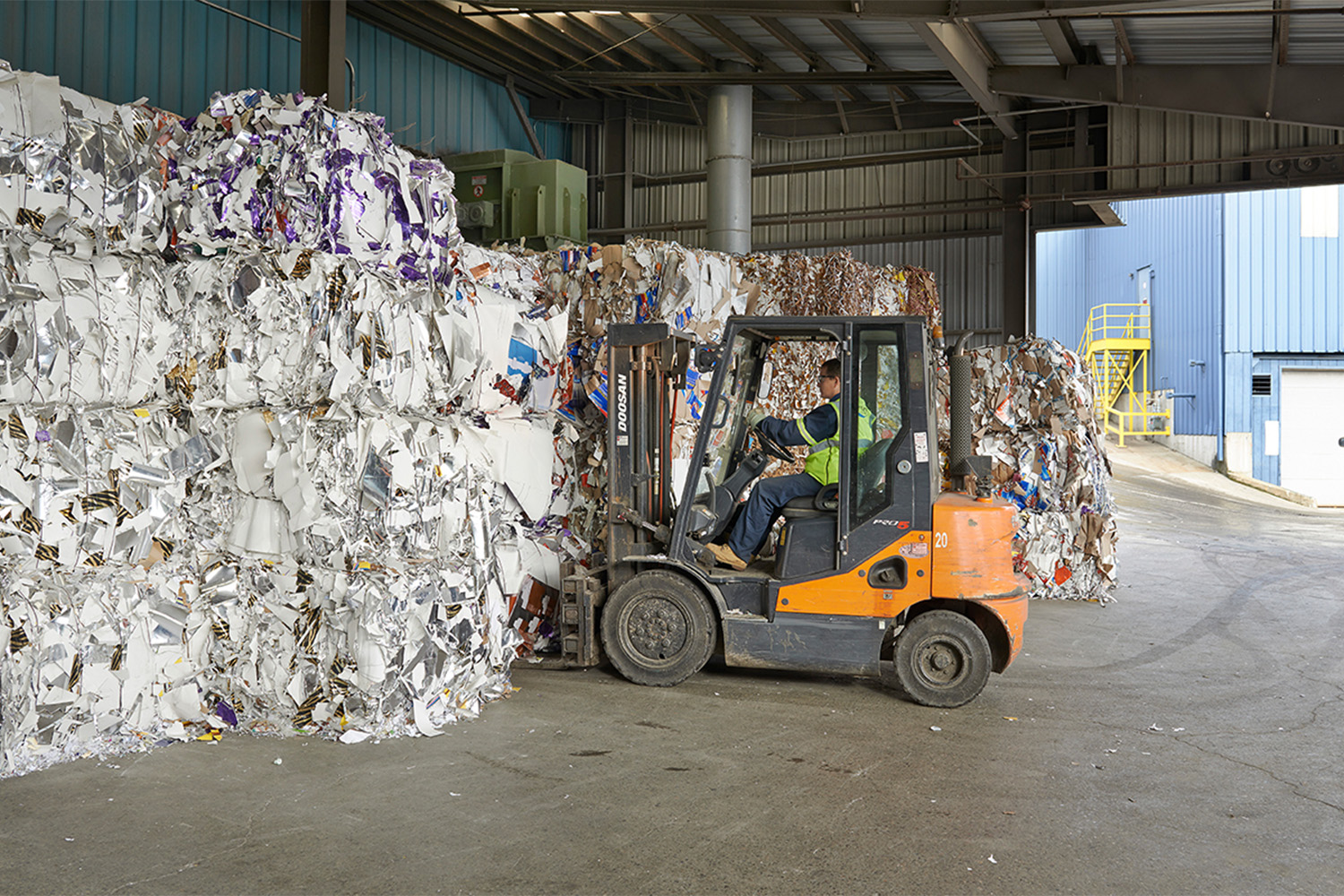
Every construction project deals with waste.
Hundreds of millions of tons are dumped into our nation’s landfills every year… so what is being done to make the industry more sustainable?
In 2006, the Massachusetts Department of Environmental Protection (MassDEP) passed a mandate that truckloads containing 20% or more of paper, wood, metal, glass, or yard waste must be deposited at a recycling facility before heading to the landfill. Thus, most construction debris heads to one of the facilities within this niche industry.
One might ask how effective, or even “real” the waste recycling process is, but Dan Colbert from EL Harvey & Sons, Inc. (ELH) is able to outline how complicated yet structured the task can be:
I thought it was something people ‘said’ happened, but when I came on board and took my first tour, I was amazed to see that it was both real and meaningful.
Dan Colbert, ELH
ELH, one of Tocci’s demolition subcontractors, is headquartered in Westborough; they own several buildings dedicated to sorting materials with equipment that transforms large debris into manageable pieces that will be reallocated to their appropriate home.
Their equipment includes conveyor belts that transfer broken-down materials from the main floor to trommels, or drums, with sorting screens that filter out 1-inch and 12-inch pieces. After this, the wet belt sorts “floatables” from “sinkables” – buoyant wood and plastic travel to the hand-sorting section where workers place materials in their respective piles, while heavier metals, brick, and aggregate are sorted by their magnetic qualities. Ferrous materials are pulled upwards by a large magnet, and the remaining materials also head to the final hand-picking stations.

Through this process, 85% of materials sent to ELH is recycled. This percentage includes ground-up brick and concrete used for road base at landfill facilities, along with “fines” – dirt, brick dust, and small chunks of wood – used for alternative daily cover (ADC) to spread over landfills at the end of every day. Not much goes to waste at ELH, as they’ve found several outlets for these final recycled products. “We’re more like a ‘repacking facility’ – we take material in, bundle it up, and send it off again to those that want and need it. It’s a challenge, but it’s fun,” Dan says.
On an average day, 350 tons enter ELH’s facility – in a year, 108,187 tons. Converting this much raw material requires flexibility to find sufficient outlets. Paper and corrugated cardboard are baled and shipped to domestic paper mills. Wood, their number one recycled material that constitutes 40% of what they recycle, is sent to biomass plants to generate electricity, or to a company in Canada to create furniture and particle board.
Our outlets are always changing – in an economic sense, we’ll send them where we’re going to get the best pricing. When China closed their doors in the last year, we had to get creative with where our products went. New doors opened around here but were quickly overwhelmed. We found outlets in Vietnam and Indonesia for mixed paper, plastics, and cardboard.
Dan Colbert, ELH
Though it can be tricky to find a final destination, it’s far better to keep recycling products local – 60% of recycled materials remain here, while 40% is shipped abroad. Dan agrees that it’s like the cycle of life: “These products come to us, are transformed, and are sent back into the community.”
We commend ELH’s effort to keep waste out of landfills and find secondary markets; they’ve been at it since 1911, using compactors before they were a “big thing”, and “before [EL Harvey] had a hand pushing [them] to do it.” ELH’s dedication is one of the things that Dan admires most about the company.
It’s a full family affair. Even Jim Harvey [ELH’s CEO] is still seen on site. He used to drive around the facilities in a golf cart! He’s been relegated to using his truck now, but it’s great to see him out here, being as much a part of it now as he was in the beginning. It doesn’t feel like a large corporation because we see the family every day. They’re always ready to help, and I can say that I work for a group of people that really care about what they do.
Dan Colbert, ELH
